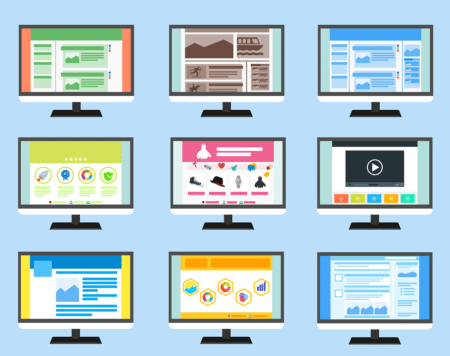 In this article, we will walk through the steps: how not to lose ratings and improve the position in the search engine for the redesign of the site.
In this article, we will walk through the steps: how not to lose ratings and improve the position in the search engine for the redesign of the site.
For companies that have achieved an exit in the top, the loss of positions can become a catastrophe. But, nevertheless, no matter how long the site did not exist, sooner or later it needs to be changed, first of all you need to change the design!
Redesign and SEO
To save or improve positions in the redesign, it is worth paying attention to three factors:
- The current situation with SEO
- Common problems with redevelopment
- Have a detailed plan of what needs to be changed in the site
First, you need to analyze your own omissions, what weaknesses are currently in SEO? Your new site should fix this issue
1. What is already working
Analyze what already works, what keywords are spelled out in the site code, what your rating is, what rankings each of the pages has.
2. General Issues
There are always many reasons for the redesign, it can be related to branding, new trends, or the reason is the lack of traffic. What you should pay attention when moving the site:
- Content can be deleted.
- The content can be changed.
- The site map can be changed.
- The URL can also change.
- The level of page optimization can change.
- New content may appear.
- New sections can be added to the site.
- New technologies or functionality can be used.
- The internal structure of links can vary.
- It is possible to change the domain, subdomain and protocol site.
Any of the above items can cause a decline in positions. We strongly recommend not to change the design of the site and transfer it to a new domain at the same time. The more tasks we perform simultaneously, the more difficult it is to find out the problems that arise
3. What will change with the redesign?
First of all, we need an analysis and an understanding of what can go wrong. The new site should have two main goals:
- Save line items
- Improve positions and increase traffic.
Ideally, you need to have a complete picture of the new site, which you can use for comparison with an existing site.
Recommendations on the redesign and how to keep the positions
- Save the old site. If you have such an opportunity, then transfer the site to a temporary link. Make sure that the site is not available in the search.
- Save the search data. Save the data of the old site, even if you saved it to a temporary address. The Screaming Frog SEO Spider is great for this
- Do not correct what is not broken. Where you can, leave everything as is, including addresses. If you can keep the URL structure and page names, then there is much less chance that something will go wrong.
- 301 redirect. Redirecting old URLs to new ones is the first stage of work in the redesign. If you can, save the content on the same URLs, then leave it safely. For example, the redesign of WordPress can remain on the same structure of permanent links. If this is not possible, then save the table of all URLs on the old and new sites, so you can implement and test your 301 redirects.
- Optimize the pages. Scanning your old site will allow you to easily export all the basic elements of the page: page headers, meta descriptions, headlines and so on. Leave the foundation of the old.
- Update your backlinks. Updated back links will facilitate fast indexing and ranking of the new site.
- Internal links. Pay attention to any changes in the internal structure of the links. If you had pages with thousands of internal links, but now they are not linked, this can affect the page rank.
- XML Sitemap. Update your sitemap and submit it to Google. Redirect 301s, page structure, navigation, and XML sitemap should be designated for search engines as early as possible.
- Monitoring of ratings. Initially, you should expect fluctuations in the ratings before you return to the basic positions. If you have questions, study them now, so you can identify and eliminate them.
- Monitoring of organic traffic. You can never track all the keywords that attract traffic. But at the same time you need to monitor traffic for key pages to see improvements.
- Use Google Search Console. The Google search console is getting better, and this platform allows you to diagnose site information directly from Google servers. Tracking redirects 301s and 404s. The search traffic tab> search queries is a treasure trove of information that covers clicks, impressions, CTR, and average positions. If you have questions, then such a diagnosis can give an idea of what needs to be changed.
The key components to support your positions in the redesign are:
- Analysis of the pros of an existing site.
- Understanding what can be improved
- Drawing up the structure and map of the future site
- 301 redirect, redirect all old URLs to new ones.
- carefully follow the results.
Redesign is needed to improve SEO and increase conversion. However, for sites with a large flow of organic traffic, each step must be done with caution. Following the instructions in this article, you should make sure that you see only positive changes in the new site.
Image credit: JuralMin
